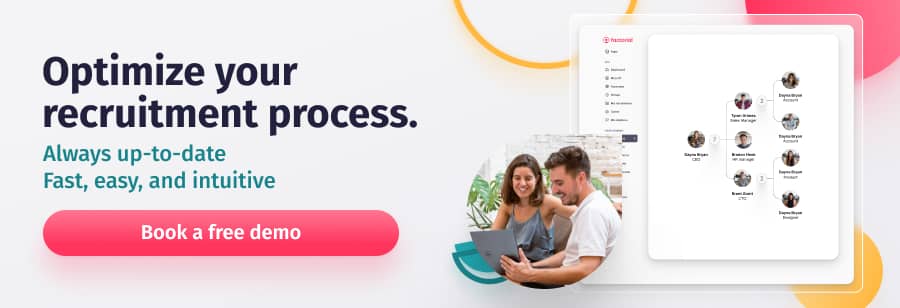The growing need for digital upskilling has resulted in record talent shortages around the world. In fact, according to a 2018 report by ManpowerGroup, 45% of employers reported difficulty in finding the skills they need. And this figure has risen exponentially since the post-pandemic crisis and the Great Resignation. One solution to this increasing demand for skilled talent is implementing a contingent worker recruitment strategy.
But, what does contingent worker mean? What is a contingent employee? Could it be a solution for your small business?
We are going to answer these questions and more in today’s post. We will also look at the differences between a contingent employee and a contractor and compare the benefits and drawbacks of including contingent employees in your workforce.

What is a contingent worker?
The nature of employment is changing. In fact, over 80% of executives surveyed by Oxford Economics say they are increasingly using contingent employees.
So, what exactly is a contingent worker?
Contingent worker definition:
When it comes to small business hiring, there are many different types of employment contracts that you can offer as part of your recruitment and selection strategy. There’s a fixed-term employment contract, a full or part-time permanent employment contract, a casual employment contract and a zero-hour contract, to name a few. You can also take on contingent employees if you so choose.
A contingent worker, also known as a contingent employee, is someone who works for you without being hired as your employee. This means you have no obligation to provide continuous work on a permanent basis. Instead, a contingent worker provides services to you under a statement of work (SOW) provision, either temporarily or on an ad hoc basis for specific projects.
Your contingent employees might include independent contractors, consultants, freelancers, temps, or other forms of outsourced labor such as gig workers. They are usually highly skilled experts in their fields, and their work is exclusively based on short-term engagements.
According to Deloitte, businesses around the world have dramatically increased their use of contingent workers over the past decade as they struggle with rising labor costs and the need for a workforce that can quickly adapt to market conditions. One reason for this is that using contingent workers allows you to adjust workforce requirements during peak periods of activity. You also are able to access specialized skills and knowledge when needed, without committing to the expenses associated with a fixed-term employment contract.
Contingent worker vs. contractor
Although contingent workers and contractors are both types of temporary employees who work for you for a predetermined period of time or a specific project, there are subtle differences between the two that you need to be aware of:
- Compensation: although a contingent worker doesn’t earn a salary from you as a normal employee would, you will usually still need to put them on your payroll and pay them an hourly wage or project-based fee. They are not, however, entitled to the same benefits you offer your full-time employees, such as paid time off and medical insurance. In contrast, an independent contractor sets their own rates and receives payment after completing a project and issuing a supplier invoice.
- Taxes: a contingent employee and a contractor usually have different income tax requirements. For example, an independent contractor is often responsible for managing their own tax obligations, including self-employment taxes (by submitting a 1099 form). With a contingent worker, you will usually need to put them on your payroll and deduct income tax accordingly. Consult your local and federal guidelines for more information on this.
- Equipment: many companies provide contingent workers with the tools and equipment they need to perform their duties. This includes a computer, an office space and supplies like paper, pens and notepads. Contractors usually rely on their own home office equipment, although this can vary by company.
- Working hours: it is up to you whether a contingent worker works in line with your defined schedule, or they set their own working hours. However, a contractor will almost always set their own schedule (although a final deadline for project completion is usually agreed upon in a contract).
The benefits of hiring a contingent worker
Now that we’ve looked at the definition of contingent worker, let’s take a look at some of the biggest benefits of hiring a contingent employee.
Flexibility
When you hire contingent employees, you can adjust the size of your workforce as needed. Once a project has come to an end, you are free to decide whether or not you will continue collaborating with them. This is much less complicated and costly than terminating an employment contract and laying off full-time workers when business slows down.
You also get the flexibility to hire a contingent employee to address specific in-house skills and experience requirements. For example, you might have a short-term need for someone with expertise in building websites. But once the website has been built, you no longer have a need for this specific skill. You can hire a contingent worker to undertake these duties for a specific period of time, and then end the collaboration once the project comes to an end.
Bigger talent pool
Taking on temporary contingent employees gives you access to a bigger talent pool. This enables you to benefit from skills that your regular workforce might be lacking. This broadens your reach as a company without expanding your permanent employee base.
You could also use the contingent worker format as a trial period to “test drive” potential employees. If they are a good fit for your company, then you can offer them a permanent employment contract once their contingent agreement comes to an end.
A contingent worker = fewer costs
You only have to pay a contingent worker the agreed project fee or hourly rate. This means you know how much taking them on will cost you so that you can better manage your budgets. You also save on training costs as, generally speaking, contingent employees are hired for their advanced skills and expertise, so they already know what they are doing.
In terms of benefits, you usually don’t need to match Social Security and Medicare contributions for a contingent worker. At the end of the year, you simply issue IRS Form 1099-MISC to contingent workers who earned more than $600. This is especially beneficial when you consider that, according to the Bureau of Labor Statistics, benefits for private industry workers in the US account for 29.8% of total employer compensation costs.
Disadvantages of a contingent workforce
There are also a number of drawbacks to hiring a contingent worker that you need to consider.
Reduced loyalty & commitment
Much the same as you find when you consider the pros and cons of hiring an independent contractor vs. an employee, contingent workers are far less likely to demonstrate the same level of loyalty and commitment as full-time permanent employees. This is understandable considering that they probably have other clients, and your collaboration is likely to be temporary. This can make it harder for them to integrate into the company and form a part of the team.
Reduced control
You also get less control over a contingent worker than you have over your permanent workforce. Contingent employees will usually define their own schedules, providing they meet performance expectations. This means that you cannot rely on them to be available during specific hours to handle business needs. You also can’t dictate how they manage their workload, provided you get the results you hired them for.
Tax & security risks
Finally, there is a degree of tax risk when you use a contingent workforce. This is because there are no clear guidelines in the way the US government defines them. If you hire a contingent worker but the government classifies them as an employee, then you could be liable for back wages and penalties. To protect yourself, you need to make sure you define clear contingent job descriptions and contingent employee terms and conditions.
The same goes for security risks. Make sure you get your contingent workers to sign an employee confidentiality agreement before they start working with you. This is vital as they will often have the same access to company information and resources as core employees. If in doubt, get competent legal advice before making a decision about a contingent hire.

Contingent employment best practices
If you decide to take on a contingent worker, then you need to provide them with a positive experience. This will help to boost your employer brand and reputation and help you attract top talent to your business. Creating the right working environment will also help minimize the disadvantages we just saw.
Consider these best practices:
- Establish clear processes and procedures for the entire contingent worker lifecycle. This includes recruitment, onboarding, project management and offboarding. The best way to do this is by creating a well-defined hiring process checklist to make sure you cover each step with every new hire.
- Define comprehensive terms and conditions for all your contingent workers. Then use an employment contract template for each new hire.
- Ensure timely payments. This will help your contingent workforce feel appreciated and part of the team. It will also help to boost their commitment to your company.
- Provide each contingent worker with the right culture, technology, and working environment so that they can perform their duties effectively. Offering the right tools will also help you build trust and engagement. Involve them in your team meetings, add them to your team chats, and invite them to informal team gatherings. In other words, treat them like you treat all your other employees!


